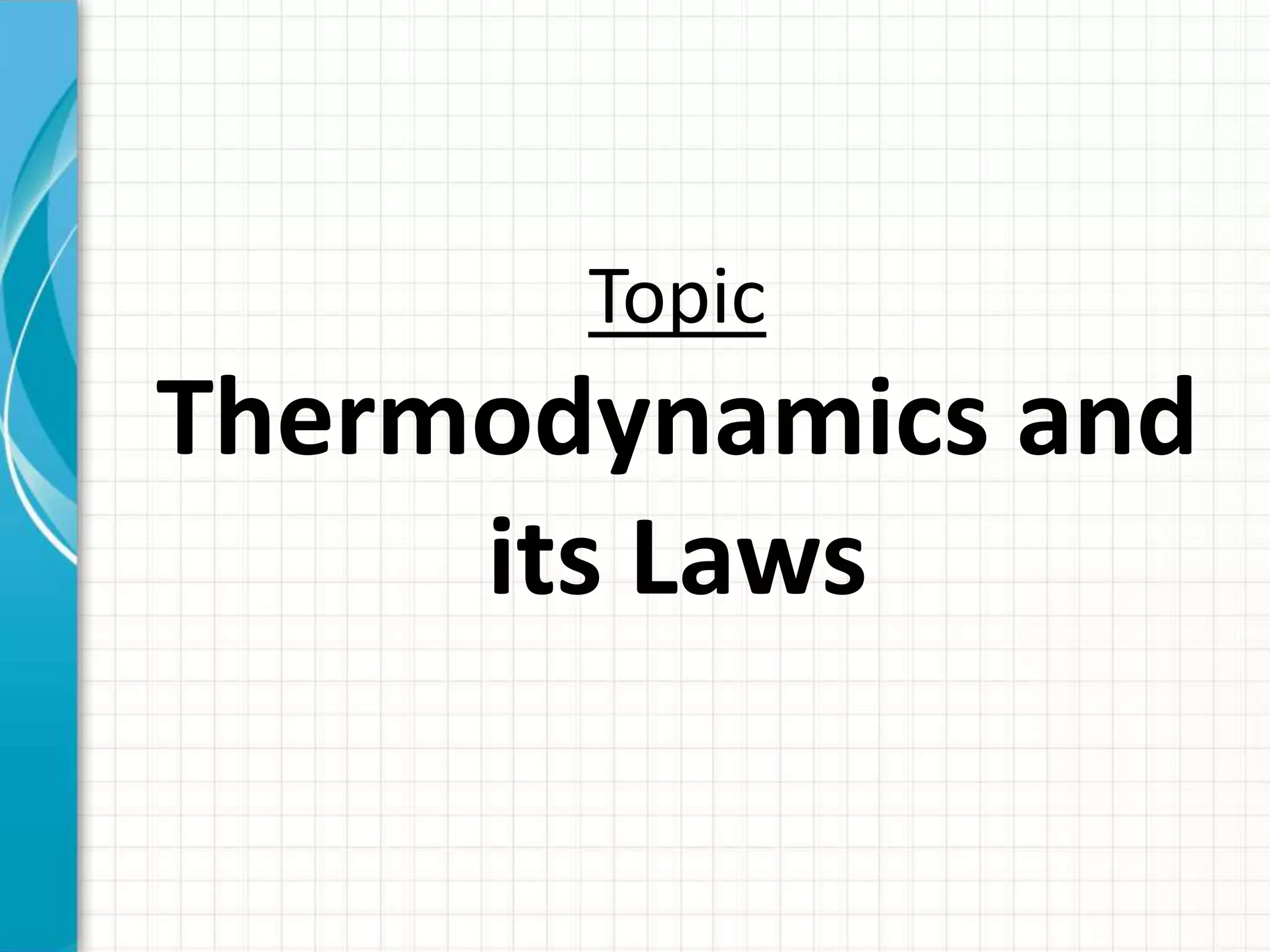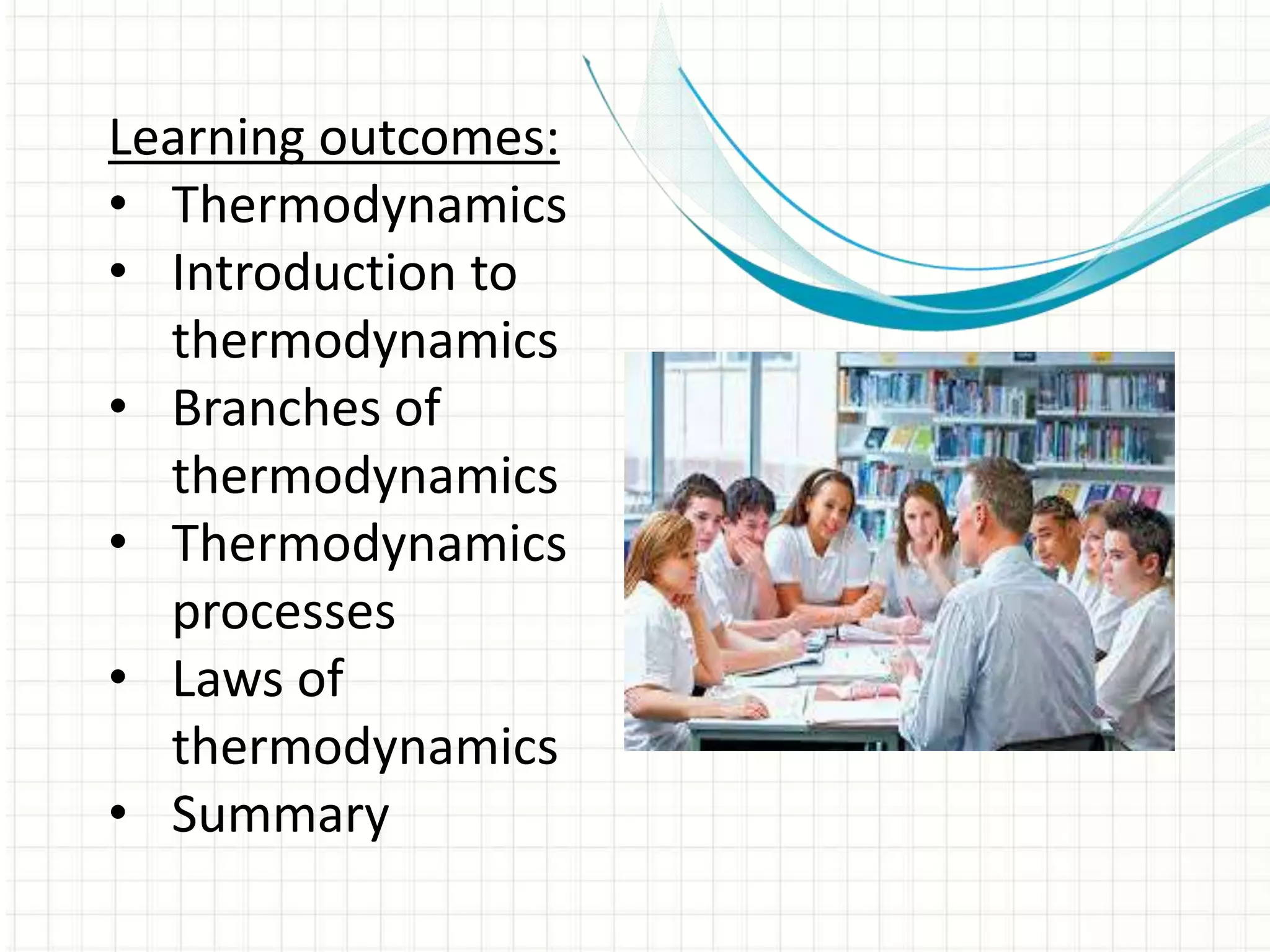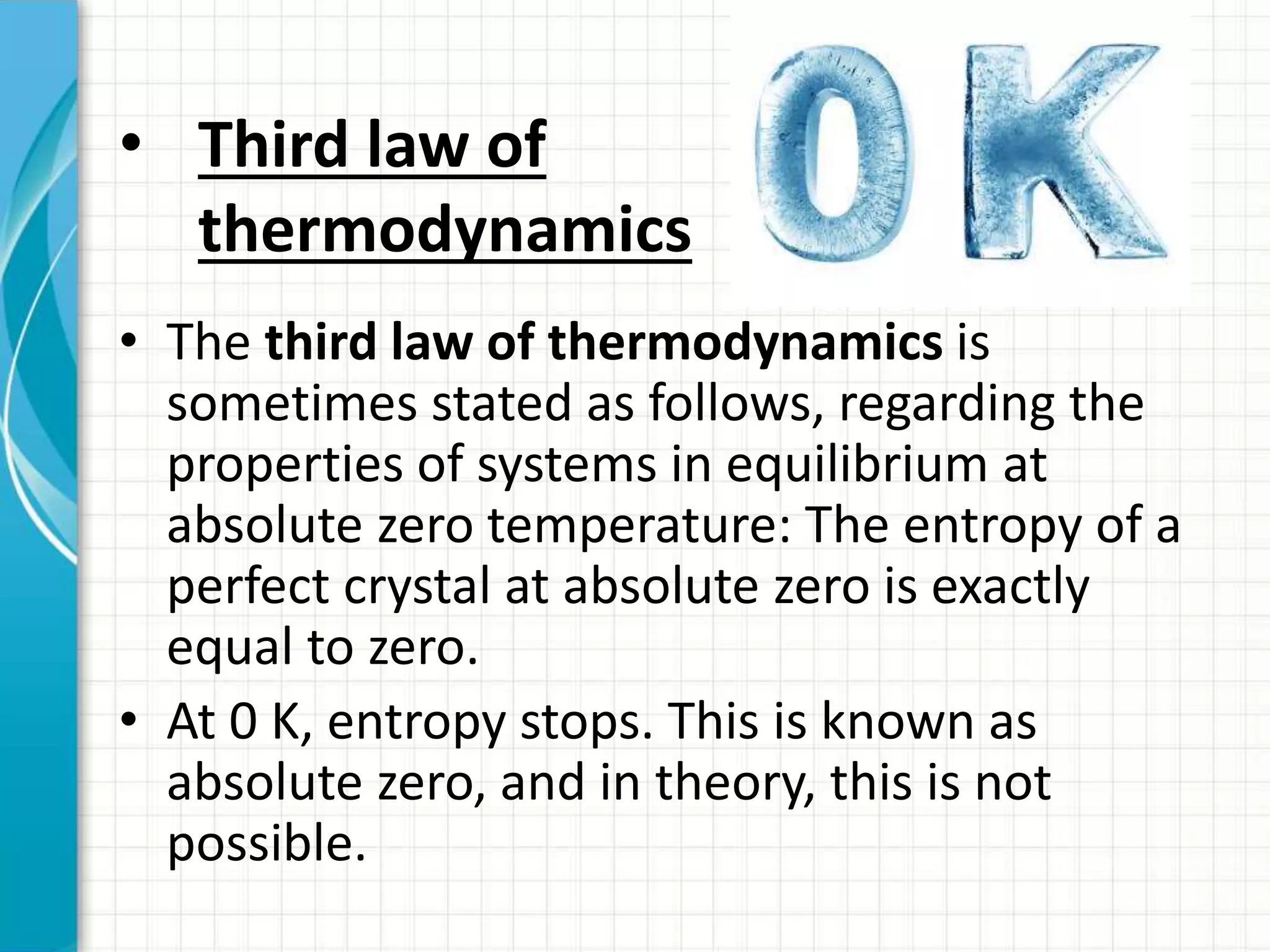1. Thermodynamics is the study of heat and its relationship to other forms of energy. It describes how heat is converted between thermal energy and other types of energy and how this affects matter.
2. Around 1850, Rudolf Clausius and William Thomson introduced thermodynamics and established the first two laws: the first law states that total energy is conserved, and the second law states that heat does not spontaneously flow from cold to hot bodies.
3. Thermodynamics is concerned with various states and processes involving properties like heat, temperature, thermal energy, and entropy. The laws of thermodynamics establish foundational principles about energy transfer and conservation.























